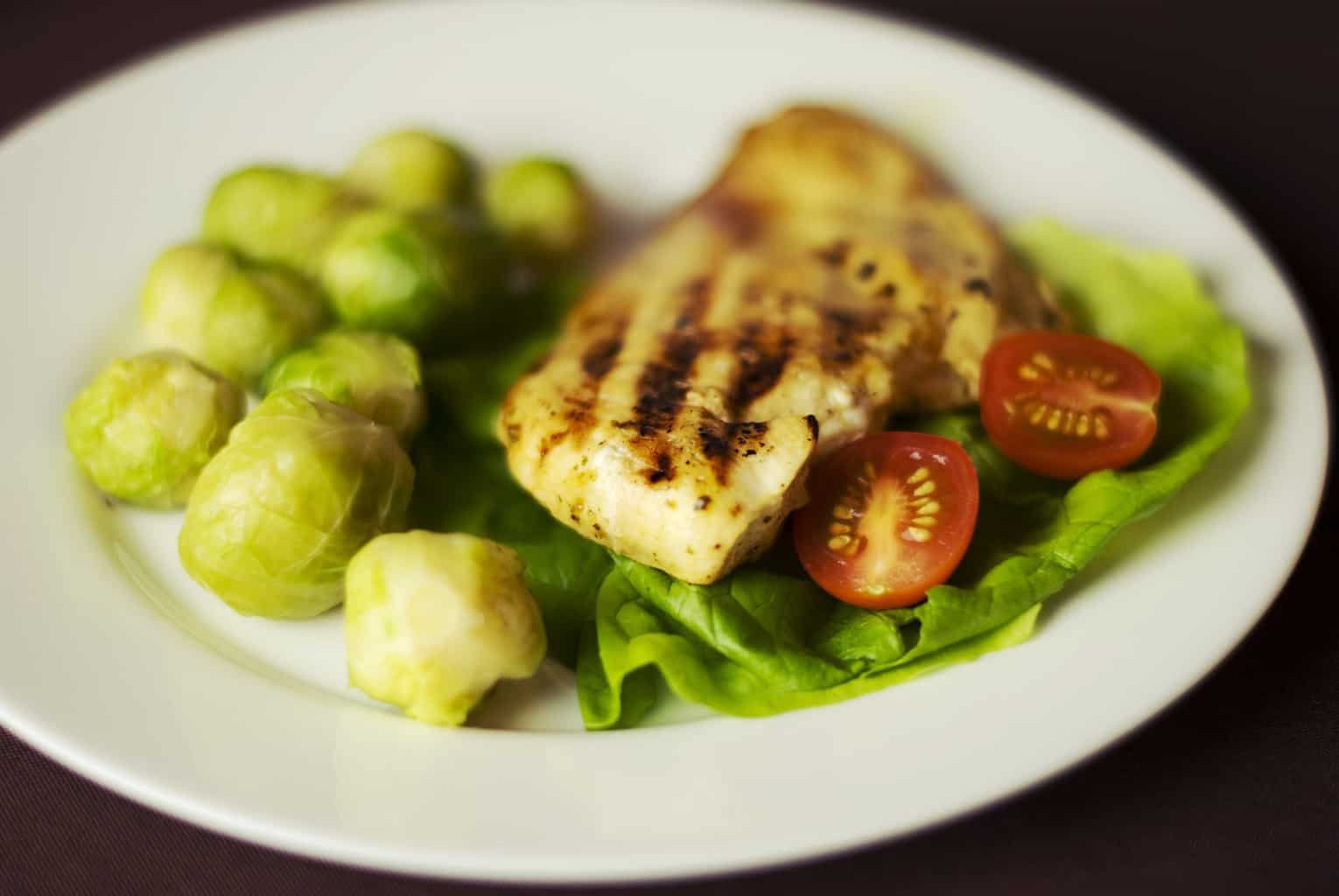- PhentermineLearn more about phentermine and how to get the most from your weight loss journey.
- ResourcesAdditional information and tools to help you make the most of your effort.
- AlternativesLearn more about the most popular weight loss medications and science-backed supplements
How to Eat Smaller Portions And Still Feel Full
Published on December 9, 2024

Many people believe shedding pounds is a big challenge, but here’s the scoop: it’s as easy as pie once you figure out how to eat less and not feel starved all the time. Honestly, it boils down to straightforward arithmetic. The speed at which you kiss those extra pounds goodbye hinges on burning more calories than you consume. When you burn more calories than you take in, your body switches into high gear, converting stored fat into energy, leading to the scale showing smaller numbers quicker than you’d expect. Stick around to learn how to make this happen without missing out on your favorite foods.
However, you can fast track your weight loss and make things happen faster by simply consuming less food. You don’t have to stop at eating less, you should go as far as ensuring you eat a balanced diet at all times and avoid high fats and high-calorie foods as much as possible. This way, you may help ensure your safety and maintenance of optimum health even as you journey towards achieving the weight you want.
Some general dieting information
Protein, Fat and Carbohydrates
Generally, most foods consist of carbohydrates, fats, and proteins. Every gram of protein or carbohydrate is known to contain 4 calories while one gram of fat contains 9 calories (5). This explains why each teaspoon of butter contains as many calories as several slices of turkey or one slice of bread. Getting rid of the excess fat stored in your body can help you reduce your calorie intakes. To maximize your weight loss, you may wish to focus more on eating less fatty foods.
Minimizing your Caloric Intake
To gain a single pound of body fat, you may need as much as 3,500 calories of grain (1). If you consume about 1,800 calories of grain per day, you can minimize your caloric intakes by about 600 calories by eating only 2/3 of your normal daily portion (1). This will help you lose about 4,200 calories every week (1). When you do this consistently, you can lose as much as 1 pound every week.
Snacking
Most times, most people make the mistake of making up for the portion sizes of their meals by snacking. What makes this a bad idea is that snacking on the wrong snacks adds back the whole calories lost from the reduced portion sizes to the body. If you plan to snack after or in-between meals, make sure the portion sizes of your meal is reduced accordingly. For example, you plan to have a lunch that contains as much as 400 calories, you can reduce the caloric content of your lunch by 100 and make up for the rest by snacking on the right foods (2). You must ensure you skip sweet and salty foods with high caloric percentage. It is a good practice to put the number of snacks you wish to consume in a bowl as against eating right from the snack container. This will help you stick to the reduced portion size you want and get the right caloric value from your snacks.
Tips to help you eat less to lose weight
You must set a goal
You can’t achieve anything worthwhile without a goal. One way to set very clear goals and make sure you stick with them is to put your goals down. Goal setting gives the clarity of purpose you may need to know where you are going and how you can get there. Your goal should be specific, well defined and with a timeframe. How long do you wish to eat smaller food portions before you start seeing the results you desire? Your goals should capture this.
Clear the clutter in your cooking space
Limit the location for your food preparations to your kitchen counters only. Cooking where you have fewer distractions will help you focus on cooking the best meals. A cluttered cooking space with storages and cooking jars will make focusing on cooking the right meals with lower calories more difficult. A well-organized kitchen can change the way you cook and eat in more ways than you have ever thought possible.
Eat at home most times
One way to help you cut down on how often you eat in restaurants is to track how much you spend eating out and how eating out makes it hard for you to focus on eating the right foods. People who eat out often stand the risk of eating more unhealthy foods and becoming fat. As a matter of fact, the high rate of obese and overweight-related cases in our society today can be traced to the alarming decline of eating homemade foods.
Change your mindset about what you find delicious and what you don’t
Humans are naturally compelled to eat more when we see that food we love more than all other foods. Unfortunately, the human brain is conditioned to crave high-calorie foods (2). However, you can set up your mind by thinking about low-calorie foods more than you think about high-calorie foods. This new pattern of thinking will help you see the healthy low-calorie foods as awesome foods choices you should always insist on. This kind of mental shift will help you eat less and still have a feeling of fullness.
Stop skipping snacks or meals
If you skip breakfast, you are sure to overindulge later in the day. The right breakfast choices will help you tame your unhealthy cravings and maintain your energy levels all through the day. Most people who fall into the habit of snacking in the night have been found to be people who miss breakfast and people whose breakfast is far from being balanced.
Find time to relax
Stress can make your task of losing weight turn into a nightmare because of its ability to increase your cortisol production which increases your hunger pangs and makes you overeat (2). This explains why people who are often stressed out do not feel full even when they eat well. Research has shown that people with a high level of cortisol still have the hunger hormone ghrelin in very high amount after a heavy meal (2).
Managing your stress effectively will help you feel fewer hunger pangs and reduce the portion of food you may need to eat to feel satisfied. Some effective stress management techniques include mindful meditation, walking, talking to a friend or therapist. When your stress levels reduce, there will be no need to try to fill up unnecessarily.
Increase your salad portions
Your diet is never complete without a good salad as your daily dessert. However, you could be eating a salad every day and still be doing it the wrong way. There is no doubt these greens provide your body with adequate vitamins, minerals, but if your salad lacks the carbohydrates needed to fuel your muscles and brain and the protein that keeps you feeling full, you will always crave for more foods sooner than later after eating the salads.
You can get around this to ensure your salad contains an adequate amount of carbs and proteins by adding foods like nuts, avocados, beans, chicken, quinoa, salmon or beans. These fats and proteins stay longer in your stomach before digesting and thus will promote the feeling of fullness for longer and help suppress your food cravings.
Stay hydrated
Sometimes what you call hunger might only be thirst. Studies have shown that more than 60% of the time when people go searching for what to eat, their body only needs a cool glass of water to quench thirst (3). Your hypothalamus, the part of the brain responsible for regulating both hunger and thirst sometimes mixes up these signals.
When you make it a habit to drink water all through the day and before your meals, you will succeed in filling up your stomach to keep hunger at bay and keep your energy levels high. This may help ensure your metabolism does not take a dip when you eat less. So, before you start eating any meal, gulp down two cups of water. People who engage in this practice eat 75-90% fewer calories than people who eat without quenching their thirst (3).
Eat mindfully
Eating without concentrating on the food you eat can make you consume more calories than you would have when you eat mindfully. For instance, when you eat while glued to your TV set, you will most likely eat more and fail to record the signal of being full on time. To avoid this pitfall, make sure all sources of distractions are turned off while you eat to prevent munching mindlessly even when your body has had enough food.
Take the elephant-eating approach
The elephant-eating approach is a technique that helps people deal with a seemingly impossible task by tackling them bit by bit. How else can you eat up a whole elephant if not to eat one piece of meat at a time? You can take this approach when dieting.
Divide your food into small portions and eat one portion at a time. Eating your food in small portions will help you feel full faster than when you try to eat it up all at once. Cutting your big loaf of bread, sandwich or whatever you have prepared for breakfast, lunch or dinner will trick your brain into believing you have eaten more than you have actually eaten.
Don’t rush your meals
You can finish a full meal within 5 minutes and still feel very hungry after that (3). This is because it takes a longer time before the satiety signal from your stomach gets to your brain. Without that all-important fullness signal, you will always eat more than you may need to eat before you feel full. You can try stretching the duration of your meal to about 20 minutes (3).
This is how long it takes for the hunger hormones to relay the fullness messages between themselves and from your stomach to your brains. You can divide your meal into two-eat the first part, wait for about 10 minutes, sip some water, engage someone in a chat before eating up the remaining portion (3).
Get more sleep
Sometimes taking care of your body is all you may need to regulate how much you eat before you feel full. People who do not sleep well at night risk confusing the hunger and fullness hormones, ghrelin and leptin (4). The hunger hormone goes up when the body does not get enough sleep while the fullness hormones decrease. So make sure you get at least 7-8 hours sleep every night to keep these hormones functioning within healthy limits (4).
Insist on solid foods
Juices and smoothies may seem like healthy alternatives to solid foods, but you may never be able to keep your hunger pangs at bay with them alone. This is because your body records calories from these liquids in a different way from how it records calories from solid foods. Also, energies from liquids are less satisfying which will make you drink more before you can feel satisfied. One other thing worthy of note is the fact that solid foods take longer to digest which may help you stay fuller for longer. But with smoothies and juices, you may need to drink more and more in your quest to get that feeling of fullness and in the process consume several more calories.
Get rid of triggers
You know the junk foods you love to munch from time to time. If you have such junk foods around your kitchen where you can always see them, it will be difficult not to grab a bite whenever you are in the kitchen. It doesn’t end with eating less, you should get rid of junks that can make your whole attempt to eat less and lose weight uselessly.
One very worrisome thing about these junk foods is that they are designed to trick your brain into believing your hunger is far from being quenched. No wonder the manufacturers of these junks advise you to eat only one. They know you can’t stop after the first bite. After all, they have nothing to lose it is all in their favor-they gain more money, you gain more fats.
Ditch the dieting
Even if they say the diet is sugar-free, do not overindulge on any diet. Drinks with artificial sweeteners will make you crave for more foods and drinks because such sweeteners do not follow the conventional satiety mechanism. Such sugar-free diets are never a good option when you want to curb your hunger pangs. Drinks with artificial sugars are not able to reduce ghrelin, the hunger hormone and its functions like normal sugar do.
Avoid fat-free foods
Never fall for those have so-called “healthy” low-fat optioned when it comes to your yogurt because you will end up looking for more to eat to feel satisfied. When you eat healthy fats, your body digests them slowly and this can keep you feeling full for longer. Fats add flavor to foods, so when foods and drinks like peanut butter or yogurt come with no fat, you can be sure they contain some taste-bursting sugars and salts-all of which can end up making you eat more.
Last but not least, stock up and eat foods that prolong your feelings of fullness and suppress your hunger for longer.
A number of foods can help you feel and stay full for longer and keep your hunger levels low. These, they achieve by promoting the production of leptin in your body while inhibiting the production of ghrelin. Some foods that can help curb your cravings and keep your hunger pangs at bay include:
- Artichokes which is high in fiber
- Resistant starches from slightly ripe bananas, raw oats, beans, etc
- Spinach which is known to contain a powerful appetite suppressant known as thykaloids
- Cinnamon which contains the spice needed to keep your fasting blood glucose high. You can sprinkle it on your oatmeal, yogurt, or popcorn
- Avocados which come loaded with monounsaturated fats
- Oatmeal which contains a large amount of insoluble fiber
- Raspberries which are known to be powerful hunger fighters
- Greek yogurt which contains enough proteins to keep you feeling satisfied and calcium to curb stress, anxiety, and depression. Stress, anxiety, and depression boost your body’s production of cortisol and hunger hormones.
Conclusion
Always use a medium-sized plate when snacking instead of your normal dinner plate. Eating from a smaller plate means you need fewer snacks to get it filled up. If you still feel hungry after you eat smaller sized foods, you can replace your food toppings and condiments with ketchup, mayonnaise, creamy sauces and some seasonings that are fat-free and contain low calories.
One thing about eating spicy flavors is that it helps convince your body you have had enough food even when you haven’t. Additionally, you can eat slowly to help you feel fuller with less. Make sure you eat more high fiber foods with low calories like steamed vegetables without the toppings. This will introduce bulk and slow-burning carbs to your meal to help you feel full and stay full for longer.
References
(1) https://www.nhlbi.nih.gov/files/docs/public/heart/weightloss.pdf
(2) https://www.academia.edu/24923904/how_to_lose_weight_quickly-how_to_lose_weight_quick-how_to_reduce_weight.pdf
(3) https://www.ncbi.nlm.nih.gov/pmc/articles/PMC4991909/
(4) https://en.wikipedia.org/wiki/Eat_Smart,_Move_More,_Weigh_Less
(5) http://www.dining.ucla.edu/housing_site/dining/SNAC_pdf/CaloriesCount.pdf


